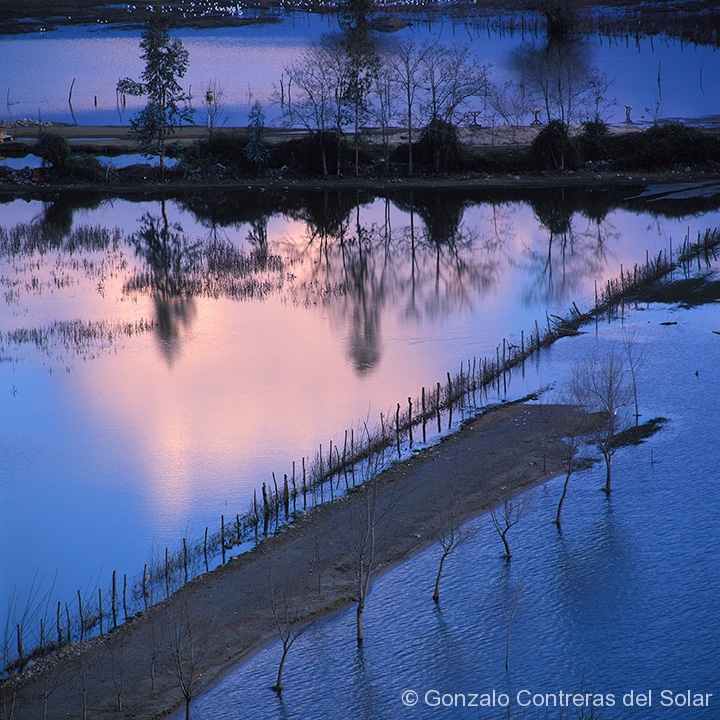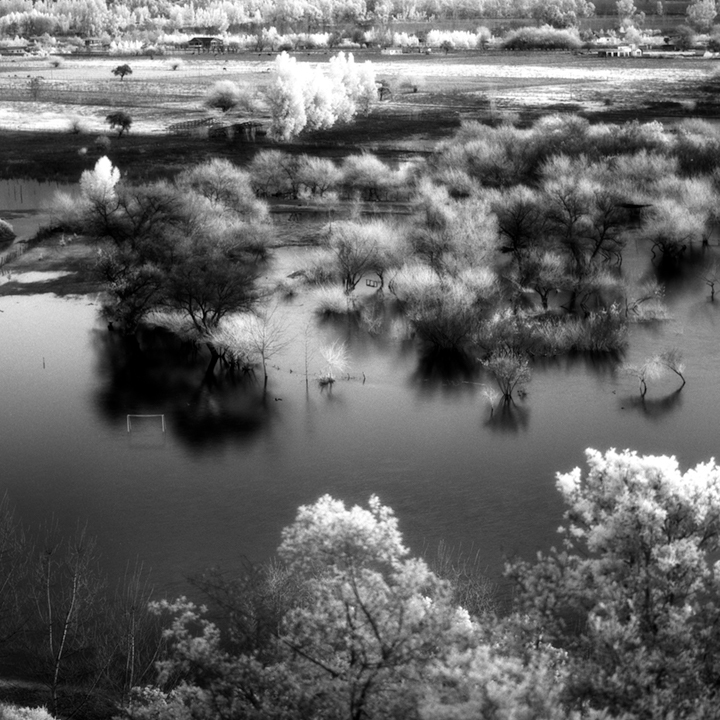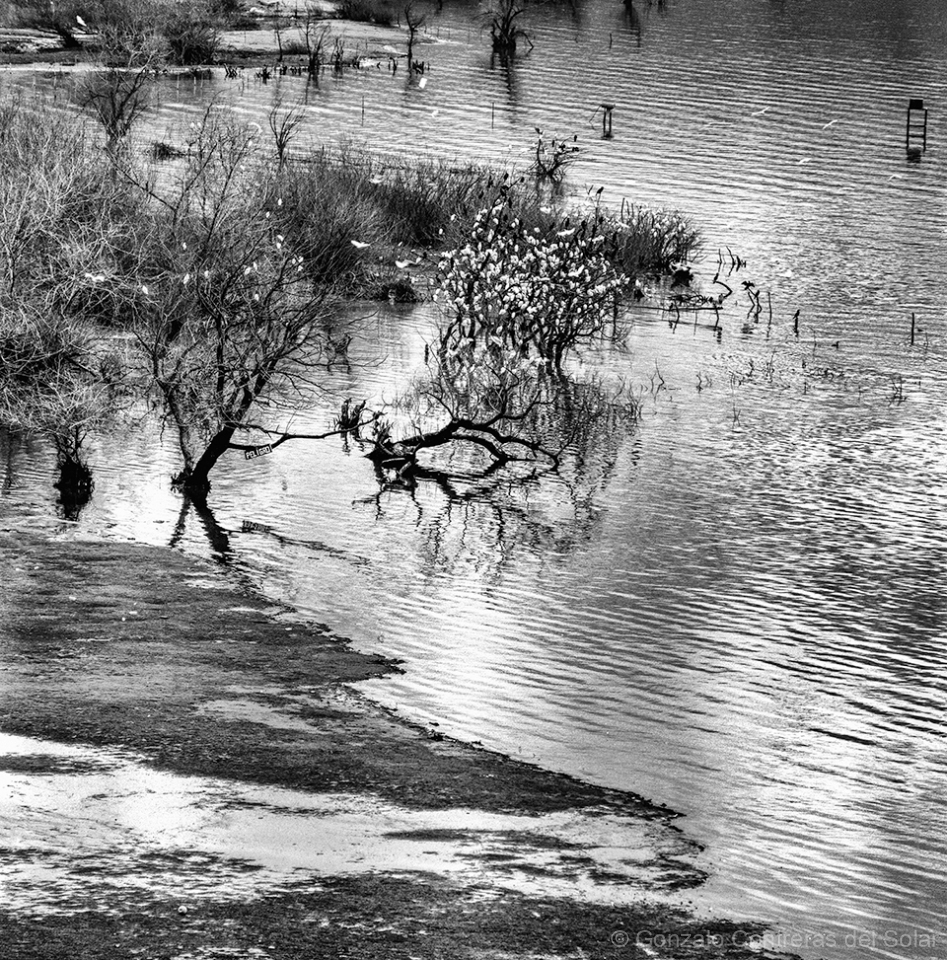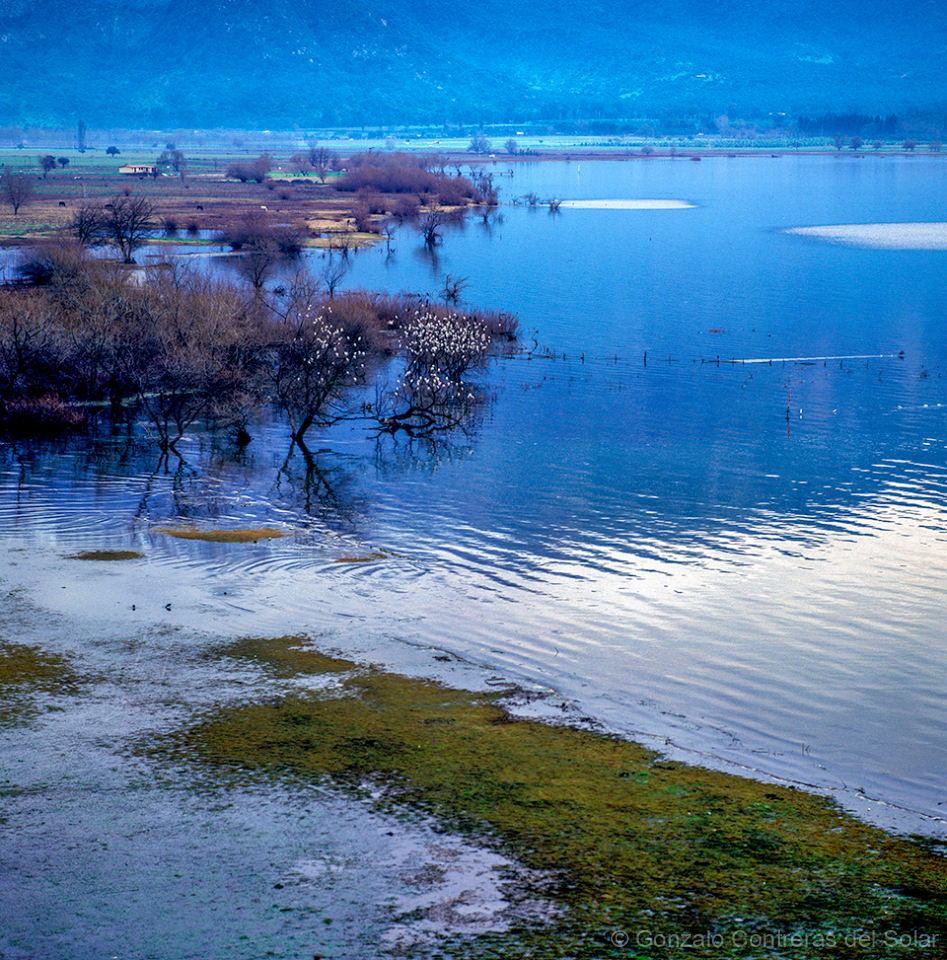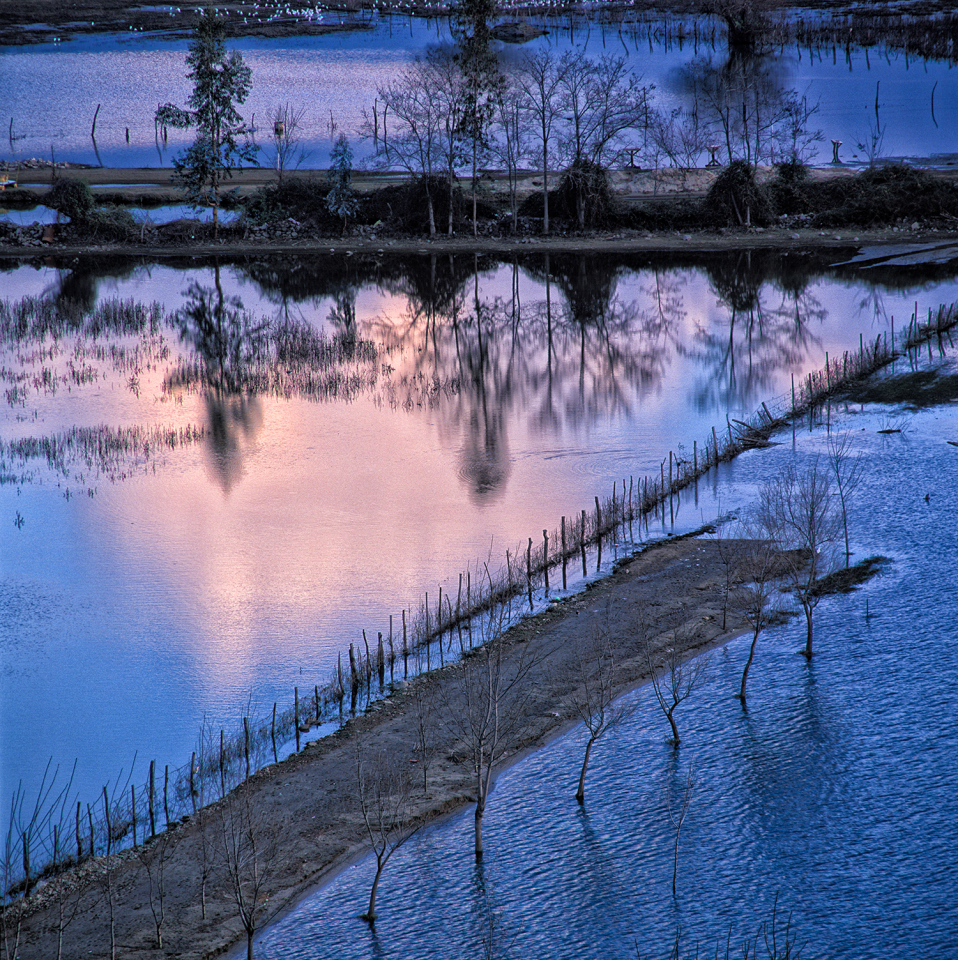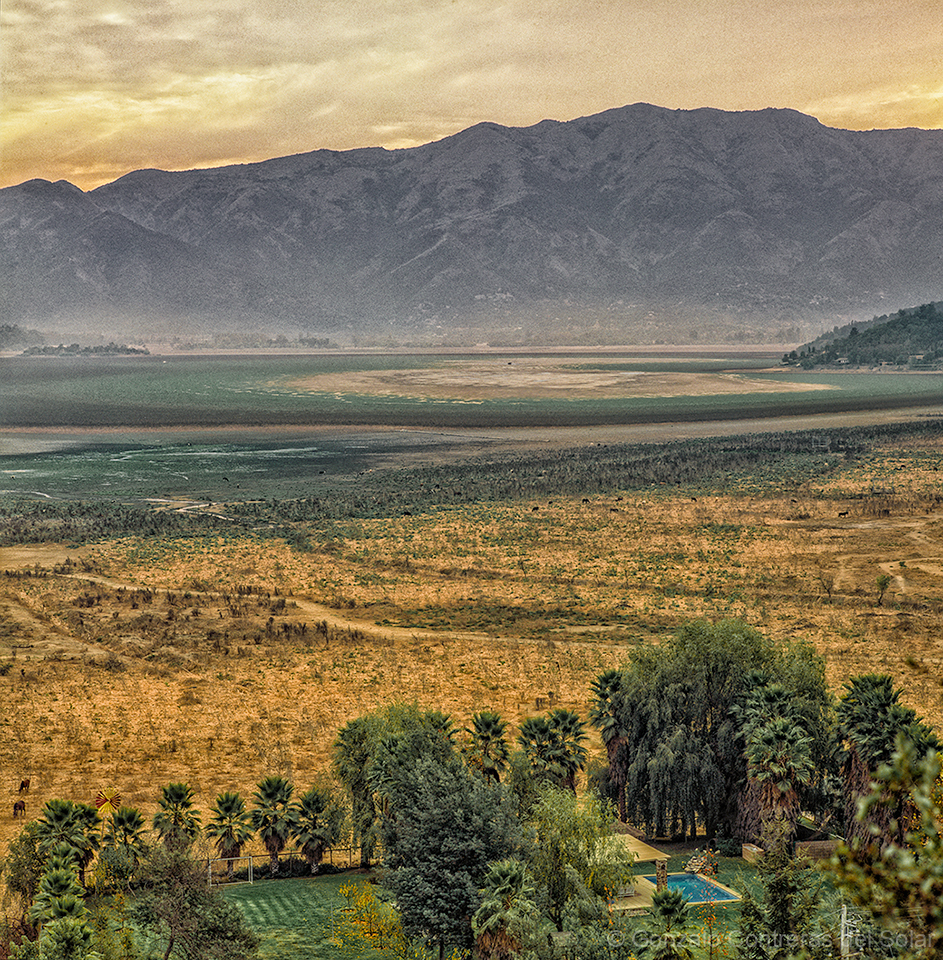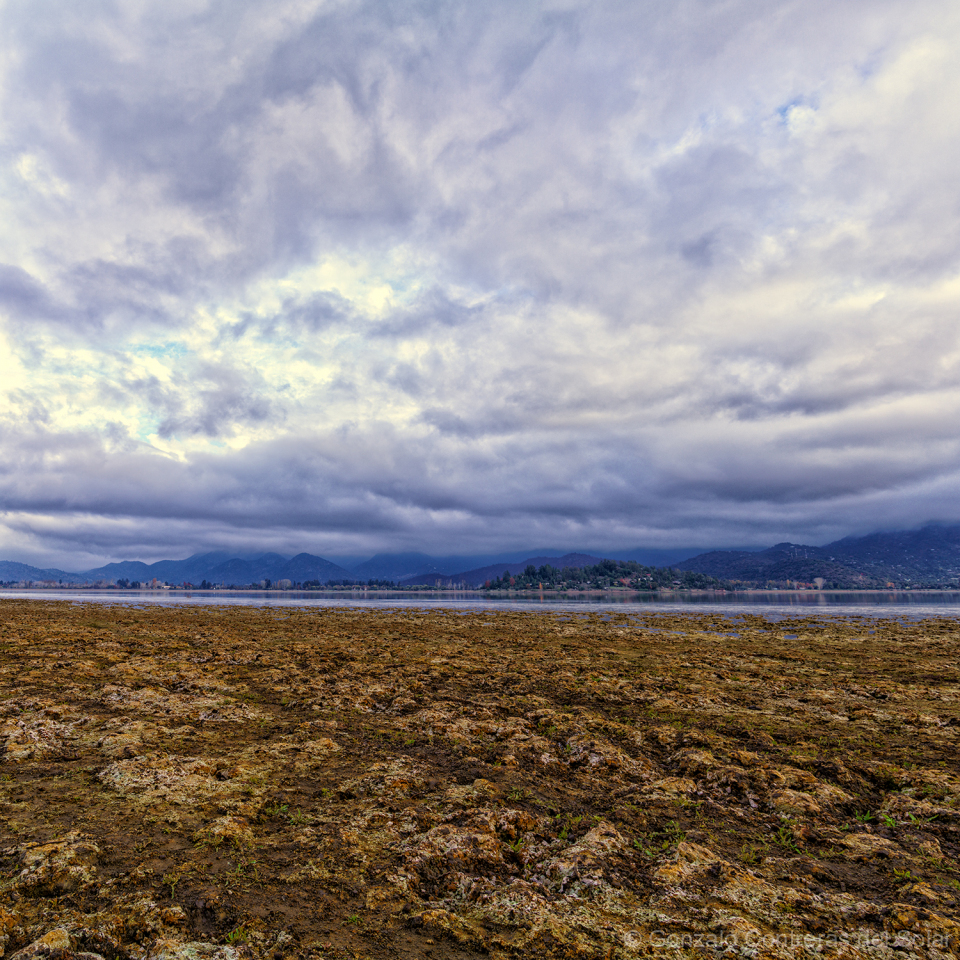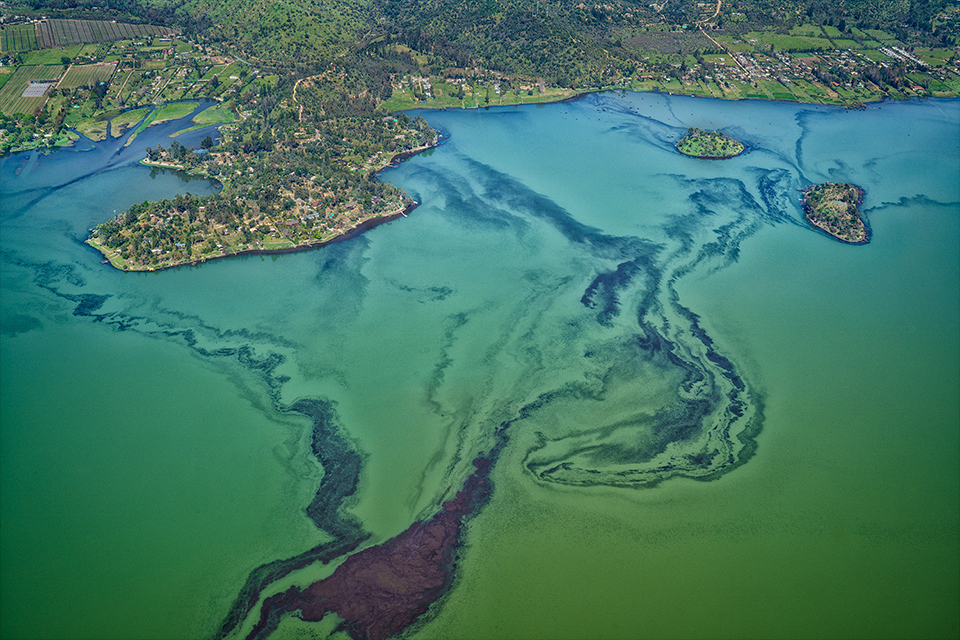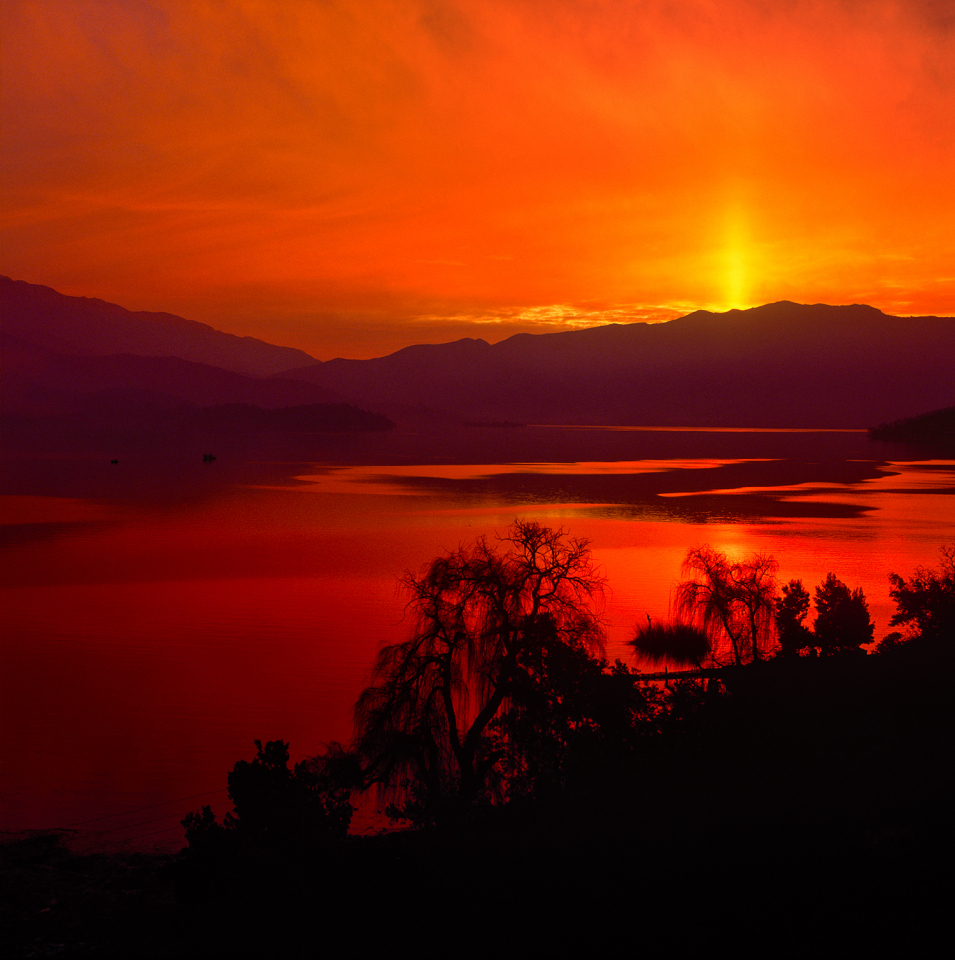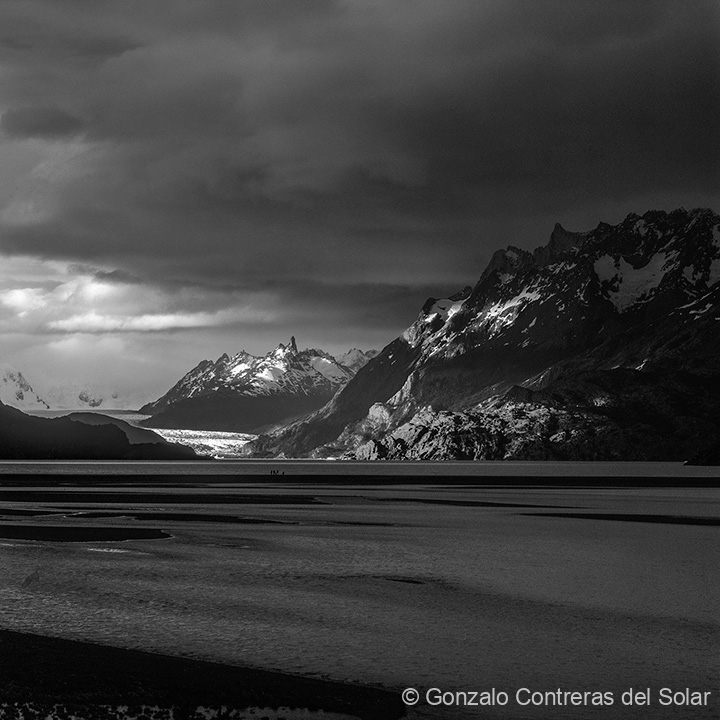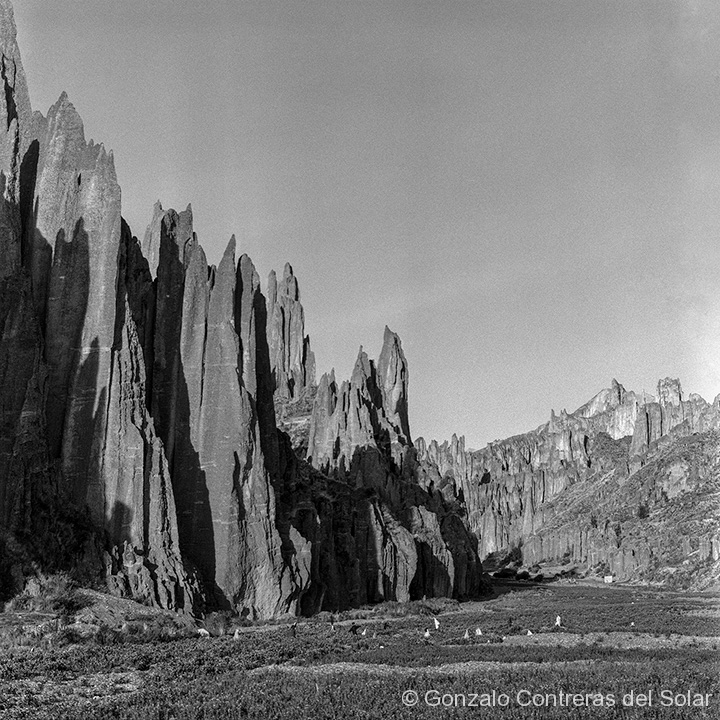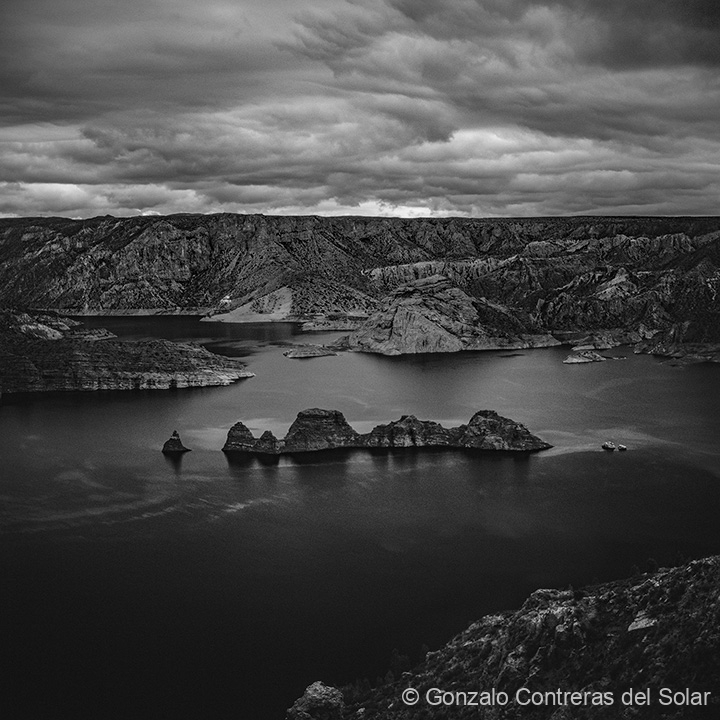The story of Laguna de Aculeo is one of disappearance and return, a mirror of time’s fragile balance with water. I first encountered this lagoon in 1994.
Heavy rains had caused its waters to spill into surrounding fields, flooding roads and fences. The expanse of water felt endless, almost defiant, a reminder of nature’s power to reclaim space.
Over the following years, visits revealed the same scene: a vast body of water, spreading far beyond its usual shore. Yet, in 2018, I was told the lagoon had dried completely.
I did not believe it until I arrived to find a barren basin, cracked earth where water once shimmered. The devastation was silent, but heavy, an image I could not forget.
By 2024, a change began. Rainfall returned and water slowly reappeared, shy at first, settling in isolated zones. Signs of life whispered through the stillness. The lagoon, once declared lost, had begun to breathe again.
This week, from a small airplane, I witnessed its full recovery. The lagoon stretched wide, blue and green tones shifting across the surface.
Some waters carried shadows of algae and traces of salinity, reminders of years without rain. Yet, the splendor of return was undeniable.
Laguna de Aculeo is more than a place. It is a living archive of cycles — overflow, drought, recovery. Its images hold not just landscapes, but memory: of what vanishes and what, against odds, returns.
Explore the series at gcs.photo — fine art photography where water, memory, and time become poetic meditation.
